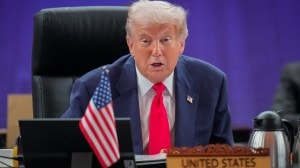What the World is Reading
Time magazine’s December 17 non-Asian editions carry a common question on their covers: “Now they tell us?”

Time magazine’s December 17 non-Asian editions carry a common question on their covers: “Now they tell us?” The United States’ New Intelligence Estimate has it that Iran stopped its nuclear weapons programme in 2003. The assessment has come into the public domain just weeks after US President George W. Bush rallied concern on Iran’s nuclear intentions by raising the spectre of World War III. The crisis the assessment immediately posed for his administration is obvious. Writes Joe Klein: “In truth, Bush seemed as befuddled as everyone else about how and why the nation’s intelligence community — the 16 federal agencies charged with spying — had issued an NIE that so profoundly undermined his provocative rhetoric toward Iran. Bush acknowledged that he had first heard in August that a new intelligence analysis of Iran’s nuclear-bomb program was imminent, but — and here comes the strange part — he hadn’t bothered to ask the Director of National Intelligence, Mike McConnell, what it might contain. The moment certainly seemed historic. This was, quite possibly, the most assertive, surprising and rebellious act in the history of the US intelligence community. The Administration seemed to have lost control of its secrets. Gone were the days when spymasters would come to the White House for morning coffee and whisper the latest intelligence to the President, and the rest of the world would find out decades later… Now the latest intelligence evaluations were being announced worldwide, nearly in real time. ‘It’s just mind-boggling,’ a former CIA officer told me. ‘The impact of the Iraq WMD fiasco is coming home to roost. The intelligence community was badly burned by that. And the various players never want it asked of them again, Why didn’t you stand up to the Administration and tell it the truth?’”
The Economist (December 8) shares the outrage but cautions “relieved doves” to read the report carefully: “Its final sentence says that Iran has the scientific, technical and industrial capacity eventually to produce nuclear weapons if it chooses… Iran can continue to work towards a bomb without resuming the secret programme America now thinks it stopped in 2003. That programme was about ‘weaponisation’: the fiddly business of making a device that can set off a chain reaction in nuclear fuel. But creating such a warhead is the easier part of building a bomb. Harder by far is making the fuel. And, as the report notes, making the fuel is precisely what Iran continues to do in defiance of UN Security Council resolutions at its uranium-enrichment plant at Natanz.” That is, diplomatic coercion could still be warranted. And the onus is on the US: “To keep the world on side, America may have to show new flexibility. For example, while tightening sanctions, it could offer to talk to Iran about all aspects of their troubled relations, even before work at Natanz stopped.”
On its website, Foreign Affairs previews an article on Iran from its January/February issue. Vali Nasr and Ray Takeyh explain the American administration’s efforts to win over the Sunni Arab states in an effort to isolate Iran. The policy was seen to be executed at the recent Annapolis Middle East conference, but the intelligence report could change the chessboard a bit.
Meanwhile: The Economist also counts the implications of rising food prices (for instance, it notes, since spring wheat prices have doubled). In the New Yorker, Atul Gawande writes on the benefits and risks of intensive care.






- 01
- 02
- 03
- 04
- 05

























